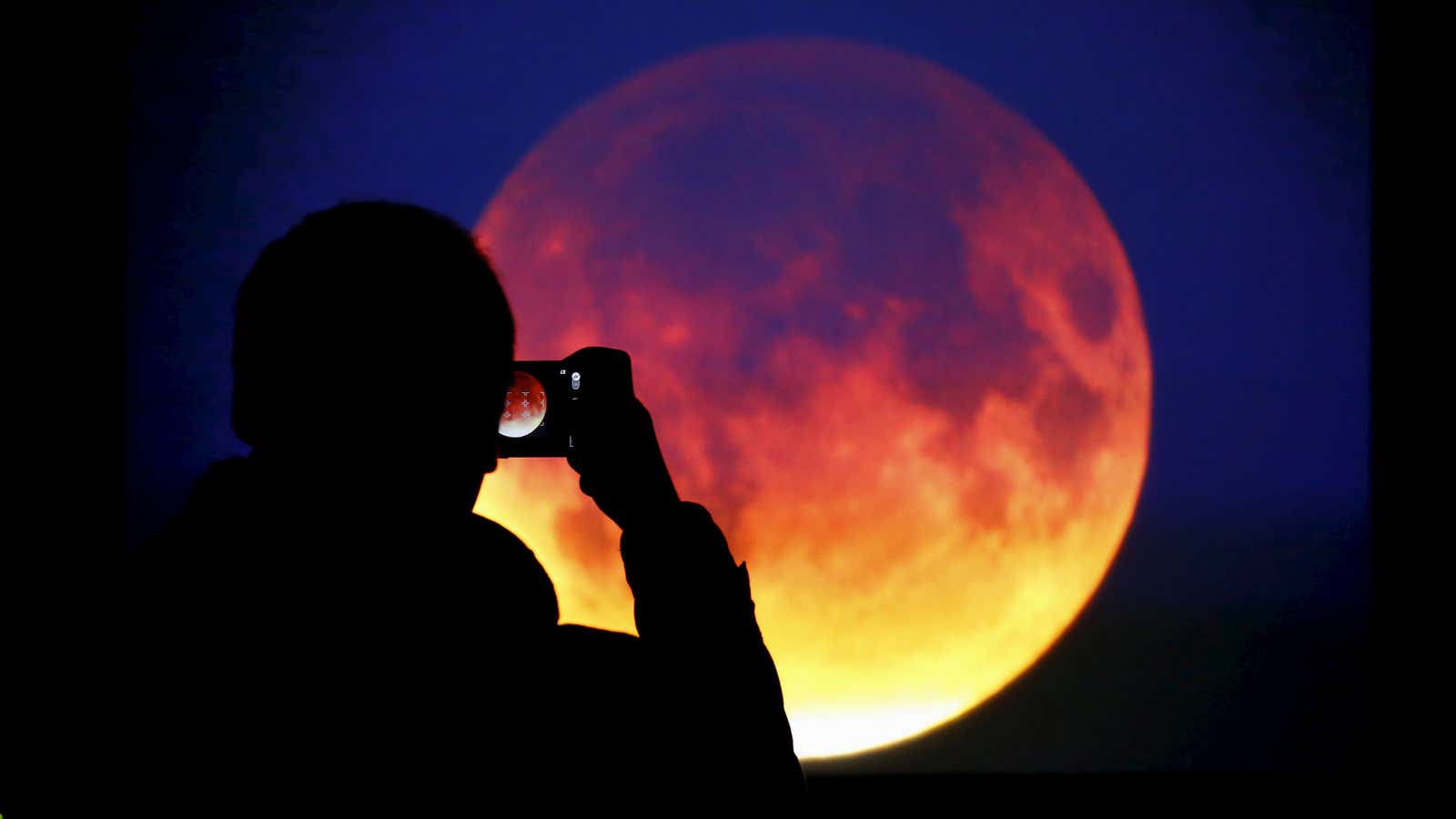On Jan. 31, half of the world will be treated to a celestial trifecta—the coincidence of a visible supermoon, blue moon, and total lunar eclipse—that hasn’t been seen over the Western Hemisphere in more than 150 years. The other half need not fret. You, too, can savor the super blue blood moon—right from you happen to be.
NASA Television and the space agency’s website will livestream the rare lunar performance, beginning at 5:30am US eastern time (10:30am UTC). Weather permitting, the coverage will feature views through the lenses of telescopes at NASA’s Armstrong Flight Research Center in Edwards, California; Griffith Observatory in Los Angeles; and the University of Arizona’s Mt. Lemmon SkyCenter Observatory.
The eclipse officially starts at 5:51am ET (10:51am UTC), and will last about five hours. The real highlight of the show will begin at 6:48am ET (11:48am UTC) and conclude at 10:11am ET (3:11pm UTC). Check out Quartz’s minute-by-minute guide to figure out when you should to tune in.
Correction: This story has been corrected to indicate that the coincidence of a super moon, blue moon and lunar eclipse had not occurred over the Western Hemisphere for more than 150 years. It had incorrectly suggested that the coincidence had not been seen worldwide in that timespan.
